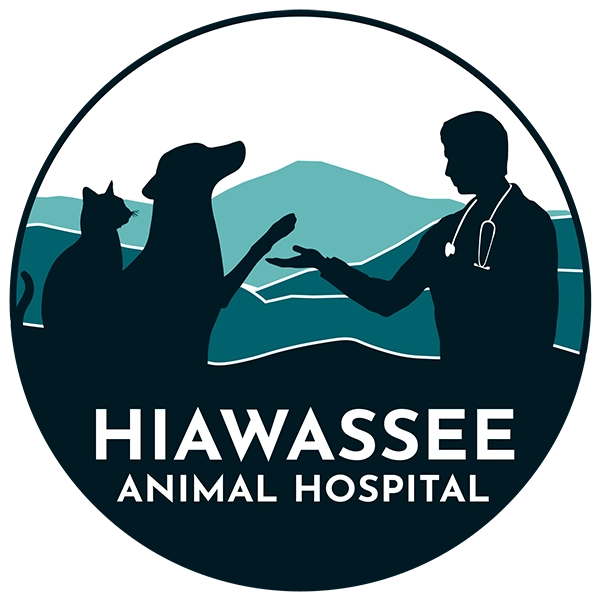You may have heard about a hidden threat in many lakes and ponds. Cyanobacteria, sometimes known as blue-green algae, is a type of algae that prefers warm water. It emits a very dangerous poison—and perhaps potentially fatal—to both humans and dogs. This is something that every pet owner should be aware of, but it is especially important for those who take their dogs swimming in freshwater. Read on to learn more about this hazardous poison from a local Towns County, Georgia veterinarian.
What Is Blue-Green Algae?
Cyanobacteria is an especially harmful type of algae because it produces a particular type of toxin. Blooms can occur whenever the average water temperature exceeds 75 degrees Fahrenheit, which is when many bodies of water are nutrient-rich. That means that the peak of the summer months—particularly during and immediately following the dog days of summer—are extremely perilous. It’s most commonly found in shallower lakes and ponds. When the conditions are right, blooms can expand rapidly.
How Dangerous Are Blue-Green Algae?
Blue-green algae is particularly harmful to humans and pets. Exposure can cause diarrhea, nausea, vomiting, skin rashes, eye and throat irritation, and respiratory distress. It may also result in severe brain issues and/or liver failure. Large concentrations of algae can be lethal if exposed to or consumed.
Dogs and animals are especially vulnerable because they don’t know better than to drink the water and can consume a large amount before you can stop them.
Is It Safe to Swim In Blue-Green Algae?
Absolutely not. Part of the risk here is that small or new blooms may be invisible. Even if a lake or pond appears to be safe, conduct your own research and check local sources. Stick to areas that have been cleared and are open for swimming.
What Are The Warning Signs of Exposure in Dogs?
It is always crucial to keep a close eye on your pet and look for signals of trouble. In this instance, you should look for panting, respiratory issues, vomiting, diarrhea, dizziness/disorientation, and excessive drooling. Another red flag is the occurrence of seizures. If you observe any of these warning signs in your canine companion, call your Towns County, Georgia veterinarian or an urgent care pet facility right away.
As previously stated, no antidote exists. However, effective supportive care can make a significant difference. For further information, ask your veterinarian.
How Are Blue-Green Algae Consumed?
Drinking contaminated water is perhaps the most prevalent method for dogs to become ill, but it is not the only one. Toxins can also be ingested by humans and pets via their skin or by inhaling water droplets or mist. This means that you can become polluted while tubing, water skiing, swimming, floating, or boating.
Dogs, of course, enjoy splashing around. Pets can become ill from being immersed in water, so even just wading can be dangerous for them. They may also later lick the cyanobacteria off their fur.
How Long Do Most Blue-Green Algae Blooms Last?
Individual blooms last only a week or two. When conditions are favorable, they may be promptly replaced by another. For practical reasons, lakes might be poisoned for weeks or even months. This often occurs between mid-to-late summer and early fall.
Will Boiling Water Remove Blue-Green Algae?
No. This is vital to remember if you enjoy camping with Fido and frequently boil water from lakes or ponds. Boiling may kill live bacteria and microorganisms, but it does not remove cyanobacterial toxins.
How Can I Tell If a Lake Is Safe For Fido?
Blue-green algal blooms are often both visible and smelly. Cyanobacteria are known as blue-green algae for good reason. The blossoms frequently resemble pea soup or green paint. They also frequently emit a smelly, marshy stench. However, one cannot judge based solely on appearance. As mentioned before, smaller blooms may not be visible to the naked eye.
If you smell a swamp odor or detect the unmistakable green scum, it’s probably safest to just assume that the lake is dangerous. However, as previously noted, you may not see the bloom. Look for posted signs; many local governments may publish notices when blooms are confirmed.
You may also view the HAB (Harmful Algae Blooms) map, which can be accessed here. This website provides updates on blue-green algae blooms in each state.
What Should I Do If My Canine Pal Comes in Contact With Cyanobacteria?
Your first step should be to bathe Fido, to get any further algae off his skin and coat. (Note: regardless of whether Fido was swimming in a pool, lake, or beach, we always recommend cleaning him off afterwards to remove sand, salt, and/or chemicals from his fur and skin.)
You’ll also need to contact your vet immediately. Warning signs may take some time to appear, or can come on very suddenly. Don’t wait to see what happens: call your vet immediately. Unfortunately, there is no antidote for the algae, but the right supportive care can make a huge difference.
How Do I Keep Fido Safe At The Lake?
Cyanobacteria aren’t the only potential hazard hiding in lakes. Swimming might be a lot of fun for Fido, but it can also be harmful. Some canines are simply not suited for it. If your canine friend is brachycephalic or has mobility limitations, he’ll benefit from swimming around in a kiddie pool. Very small canines are also dangerous in the water, since they can drown in a matter of inches. If you’re not sure whether swimming is appropriate for your furry bestie, see your veterinarian.
If your dog does not know how to swim, teach him. Never just put a puppy in the water and hope for the best. Encourage him while he learns by giving him praise and comments.
However, keeping a close watch on Fido while he’s in the water is also critical. Never leave your dog alone near water. You’ll of course want to avoid taking him anywhere with blue-green algae blooms, but you’ll also need to stay away from any places with steep drops, large wakes, and strong currents. Red tides are also a risk for anybody visiting the beach this summer.
Your dog should also obey simple commands like Sit, Stay, and Come. This is critical because it keeps your canine friend from reaching a potentially unsafe area. If you’re taking Fido to the pool, start by teaching him where the stairs are.
Last but not least, do not allow Fido to drink water from lakes, ponds, or puddles. In addition to the cyanobacteria risk, he may contract parasites such as Giardia.
Conclusion: Blue-green algae, or cyanobacteria, is a harmful algae that blooms in many lakes and ponds during the summer. It is particularly harmful to pets and livestock, and exposure can be fatal for our canine companions. Pet owners must understand the dangers and how to identify and prevent blooms.
Schedule A Veterinary Appointment At Your Towns County, Georgia Pet Hospital
Is it time for your four-legged friend to get a checkup? Is Fido required to come in for wellness care, immunizations, or parasite treatment? Feel free to contact us, your local Towns County, Georgia animal clinic, at any time.



